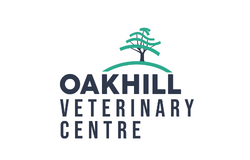Does your horse cough at the beginning of an exercise session? Do you often find accumulations of mucus outside your horse’s stable door? These subtle signs can indicate lung inflammation.
Formerly known as COPD or RAO, Equine Asthma is commonly seen in equine practice. For the purpose of simplicity, two forms are recognised- Summer asthma and the more traditional dust-induced form.
Both forms of the disease occur when a susceptible horse inhales either an allergen, to which they are allergic, or dust into their airway. This results in the airway spasming and the production of increased amounts of both inflammatory cells and mucus within the airway.
Affected horses present with clinical signs of varying degrees of severity. Some horses present with the subtle signs mentioned above or with a history of poor performance, whereas others present in respiratory distress and struggling to breathe.
On examination affected horses will generally have an increased breathing rate and effort combined with nostril flare. Mucoid nasal discharge may also be present. More severely affected horses may cough, have abdominal effort to their breathing and may have a ‘heave-line.’ A horse’s history combined with clinical examination findings will point towards a diagnosis of asthma but for definitive confirmation, airway endoscopy, to visualise the airway and grade airway mucus combined with laboratory analysis of respiratory tract samples is required. This will also rule in/out secondary bacterial infection.
Treatment of asthma should be based on environmental modifications plus drug therapy on an as needed basis. Horses affected by dust-induced asthma should be turned out in so far as possible. The stable environment should be closely examined. Ideally, the stable will have an inlet and outlet for airflow. Forage should not be stored adjacent to the stable to minimise the dust to which the patient is exposed. Horses should be groomed outside of the stable and fresh bedding laid when your horse is not in the stable environment. If your horse’s stable is unsuitable, try find an alternate stable on your yard that has better airflow. If feeding hay or ‘dry’ haylage, steaming is optimal to reduce dust particles but if not available, soaking should be considered. Managing Summer asthma is more challenging, but the measures outlined above should be followed to ensure stable ‘air hygiene’ is a good as possible.
Drug therapy, when needed, is based on relieving airway spasm (bronchodilators) and reducing airway inflammation and mucus production (steroids and mucolytics). Drug therapy can be provided by the oral or inhalatory routes. Oral medication includes bronchodilators, steroids and mucolytics (which serve to break-up airway mucus). From an inhalatory medication perspective, three options are available- the Equihaler, MDIs and nebulisation. The Equihaler is a licensed, steroid based product which utilises a fine mist to deliver steroid directly to the lungs. The product is very safe as the steroid acts at the lung surface only. We have had some great success using this product in cases of severe asthma and in those that did not respond to other forms of medication. MDIs, human asthma inhalers administered via a baby asthma face mask, have been utilised in equine practice for many years. These are probably most useful in relatively mild cases. Drug delivery via a nebuliser is the third inhalatory option but arguably used less frequently these days.
If you have any questions regarding asthma or think your horse may be affected, please do not hesitate to contact the team for guidance.
